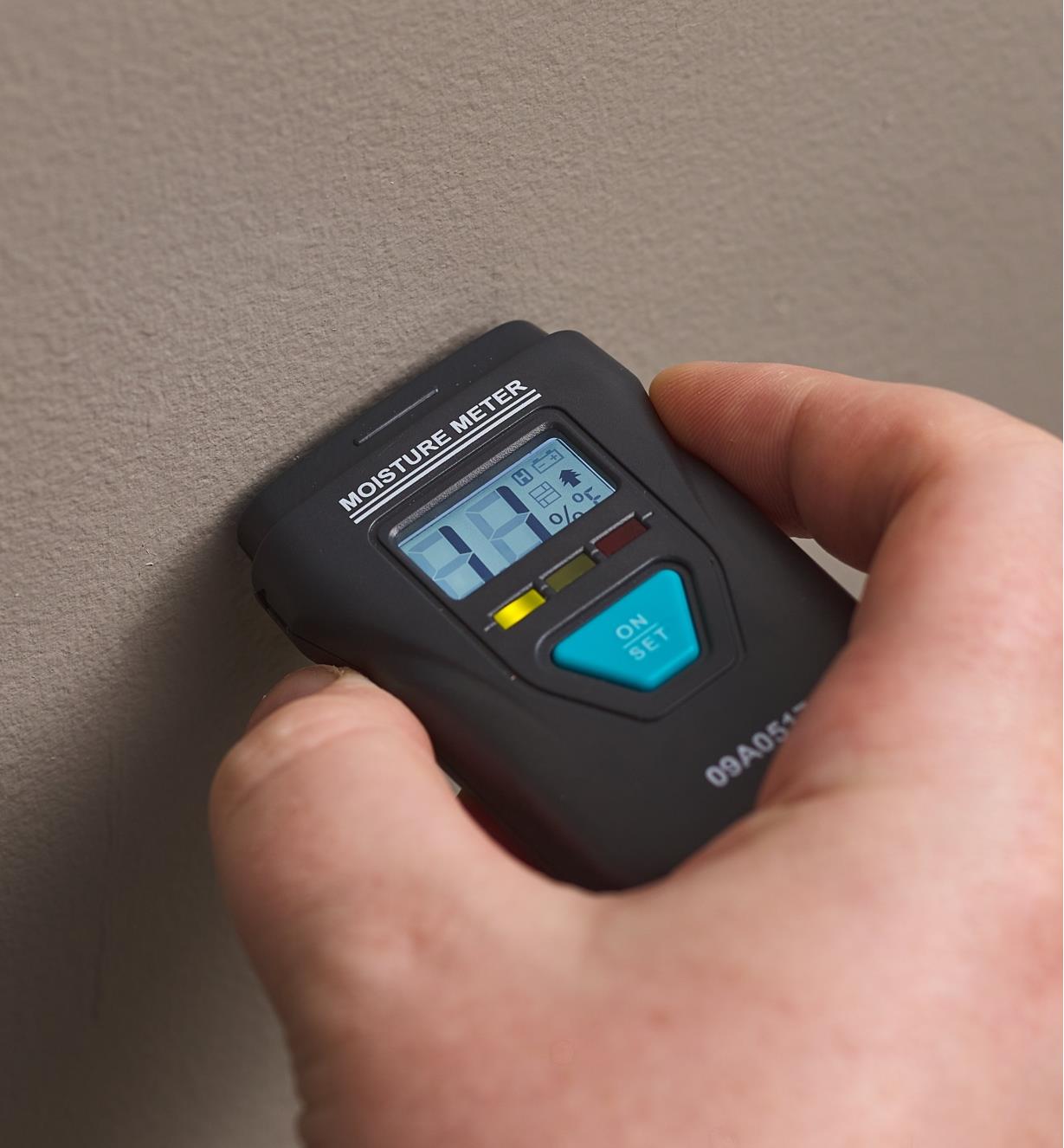Understanding the Various Types of Moisture Meters and Their Applications
Understanding the Various Types of Moisture Meters and Their Applications
Blog Article
Comprehending the Importance of a Moisture Meter in Avoiding Mold and Water Damages in Your Home
In the realm of home maintenance, the presence of moisture can usually be a silent yet powerful foe, with the ability of causing pervasive mold and mildew development and insidious water damage if left untreated. Amidst the peaceful atmosphere of a residence, concealed moisture issues can make beneath the surface area, positioning a threat to both home and health and wellness. Outfitted with the right tools and expertise, homeowners can proactively battle these potential threats. Comprehending the importance of a moisture meter in this battle is not simply a choice however a tactical necessity.
Importance of Moisture Detection
Reliable wetness detection techniques are critical for protecting buildings and stopping potential mold development and water damage. Wetness can leak into various structure products, bring about structural concerns and health and wellness hazards. By using a dampness meter, residential or commercial property owners can proactively identify areas prone to excess wetness, enabling for prompt treatment and reduction methods.
Moisture meters give exact readings of dampness levels in various materials such as wood, drywall, and concrete. This information assists in determining locations of issue, even in hard-to-reach or concealed locations. Early detection of wetness accumulation makes it possible for prompt repair services or changes to stop additional damage.

Just How Moisture Meters Work
Dampness meters play a critical role in the positive identification of excess wetness, helping in the avoidance of potential mold and mildew development and water damage by giving precise analyses of dampness degrees in numerous building products. Some progressed moisture meters integrate both pin and pinless technologies for extensive wetness discovery. Recognizing just how moisture meters function is vital for exact and timely dampness level analyses, allowing reliable preventative procedures versus mold and mildew and water damage.
Finding Early Caution Signs
Upon preliminary inspection of a property, recognizing refined indicators of excess wetness comes to be important in the early discovery of potential mold and mildew growth and water damage. Water stains can signify site link leaks or infiltration, while peeling off paint or wallpaper may be a result of wetness endangering the attachment of these products to the surface area. Furthermore, a rise in allergic reaction symptoms or respiratory concerns among occupants may suggest the existence of mold and mildew due to excess moisture.
Protecting Against Mold Growth
Recognizing very early warning signs of excess wetness within a residential property not only enables prompt detection of potential mold growth and water damages however additionally serves as an aggressive measure in stopping the proliferation of mold and mildew. To effectively protect against mold and mildew development, it is crucial to address any type of resources of moisture promptly.
In addition to attending to moisture sources, maintaining indoor moisture levels listed below 60% can dramatically hinder mold and mildew growth. Appropriate air flow, sufficient insulation, and using a/c or fans can aid regulate indoor moisture degrees. Keeping an eye on moisture degrees in locations vulnerable to dampness, such as cellars and creep rooms, utilizing a wetness meter can additionally aid in very early detection of raised wetness degrees and prospective mold development. By taking proactive steps to prevent excess wetness and mold development, property owners can secure their residential or commercial property and indoor air top quality.
Advantages of Normal Surveillance
Normal surveillance of moisture levels in a building can play a crucial role in keeping a healthy interior setting and stopping possible mold and mildew and water damages. By on a regular basis inspecting moisture levels, home owners can identify any kind of problems quickly and take required actions to avoid mold and mildew development and water damages.
Furthermore, normal tracking enables property owners to track patterns and patterns in wetness degrees over time. Ultimately, a knockout post the constant tracking of moisture levels equips property owners to secure their residential or commercial property, safeguard their health and wellness, and protect the stability of their indoor setting.

Final Thought

By utilizing a wetness meter, property owners can proactively identify areas vulnerable to excess dampness, enabling for prompt treatment and mitigation approaches.

Keeping track of dampness degrees in areas susceptible to dampness, such as cellars and creep spaces, making use of a moisture meter can also help in early detection of raised dampness degrees and prospective mold development. (Moisture Meter)
Report this page